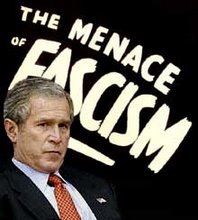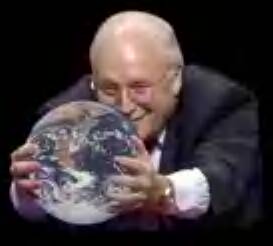Peace with "honor":
Cheney channels Nixon, and the history of a disastrous promise
And I pledge to you tonight that the first priority foreign policy objective of our next Administration will be to bring an honorable end to the war in Vietnam. We shall not stop there. We need a policy to prevent more Vietnams.
-- Richard Nixon, accepting the Republican presidential nomination, Aug. 7, 1968.
They say that in Nixon's final days in the White House in 1974, the disgraced soon-to-be-ex-president roamed the hallways, talking to portraits of dead presidents. Frankly, you have to wonder if Dick Cheney is having an animated conversation with Nixon's portrait these days.
Cheney's long strange trip through American politics pretty much began in the Nixon White House in the early 1970s, and much of his public life seems like a crusade to avenge his misunderstood ex-boss. At the height of Watergate, he told friends it wasn't a scandal but "a power struggle," and as top aide to Nixon's successor Gerald Ford, he chafed so much at the post-Watergate restrictions on White House power that he honed his bizarre theory of an all-powerful unitary executive.
Those aren't the lessons that most Americans took away from the Nixon years, and yet they are shaping our nation's government some 33 years later. Even so, we never expected Cheney to look to Nixon for inspiration on handling the fiasco that is Iraq. Until now.
Check out the echoes of 1968 in what Cheney said earlier this week on his Asia junket:
"And I want you to know that the American people will not support a policy of retreat," he added. "We want to complete the mission, we want to get it done right, and we want to return with honor," said Cheney, who heads on Thursday for Australia to meet Prime Minister John Howard, another backer of Bush's Iraq policy.
It's an old line, but it's new to Cheney and the Bush White House. And if you know the history of Richard Nixon, you can see why the word "honor" is so important. You see, we all know what "war" looks like, and we all know what "peace" looks like. But "honor," well that is truly in the eye of the beholder.
For Richard Nixon, "peace with honor" was not synonymous with "peace."
It meant "war." A lot of war.
Not long after taking office in 1969, Nixon -- without authorization from Congress -- initiated a secret air campaign against enemy sanctuaries in Cambodia that dropped 2,750,000 short tons of bombs, more than the alllies used during all of World War II. He later undertook a massive bombing campaign of Hanoi and Haiphong, and his efforts didn't bring much peace on the homefront, culminating in the slaughter of four bystanders during a 1970 protest at Kent State.
Finally, in January 1973, Nixon declared "peace with honor."
There are three things you should know about this.
1) When Nixon gave that speech at the GOP convention, it had been 1,467 days since the alleged incident in the Gulf of Tonkin that triggered the American escalation of the war. When he finally achieved his "peace with honor," it was another 1,633 days later, so more than half the fighting came after the "peace with honor" promise.
2) More importantly, from the start of 1969 through the end of the war, some 20,604 American soldiers died in pursuit of "peace with honor," more than one-third of the total (58,202) for the entire war.
3) In the end, "peace with honor" didn't look all that different than "peace" -- i.e., if Nixon had merely brought the troops home on Jan. 20, 1969. As we all know, Saigon still fell, in May of 1975.
So now we have another White House saying that troops can come home from Iraq (one of those more "Vietnams" that Nixon pledged to prevent, by the way), but only if they do so with "honor." You can bet that means "honor" is an elusive target that won't be achieved in the next 23 months, until the next president takes office.
"Peace with honor," when sought through further bloodshed, is neither peaceful nor honorable. That makes sense, but not when Dick Cheney is too busy engaged in his dialogue with Dick Nixon's portrait.
(In accordance with Title 17 U.S.C. Section 107, this material is distributed without profit to those who have expressed a prior interest in receiving the included information for research and educational purposes. I.U. has no affiliation whatsoever with the originator of this article nor is I.U endorsed or sponsored by the originator.)
The Nazis, Fascists and Communists were political parties before they became enemies of liberty and mass murderers.
Subscribe to:
Post Comments (Atom)




No comments:
Post a Comment